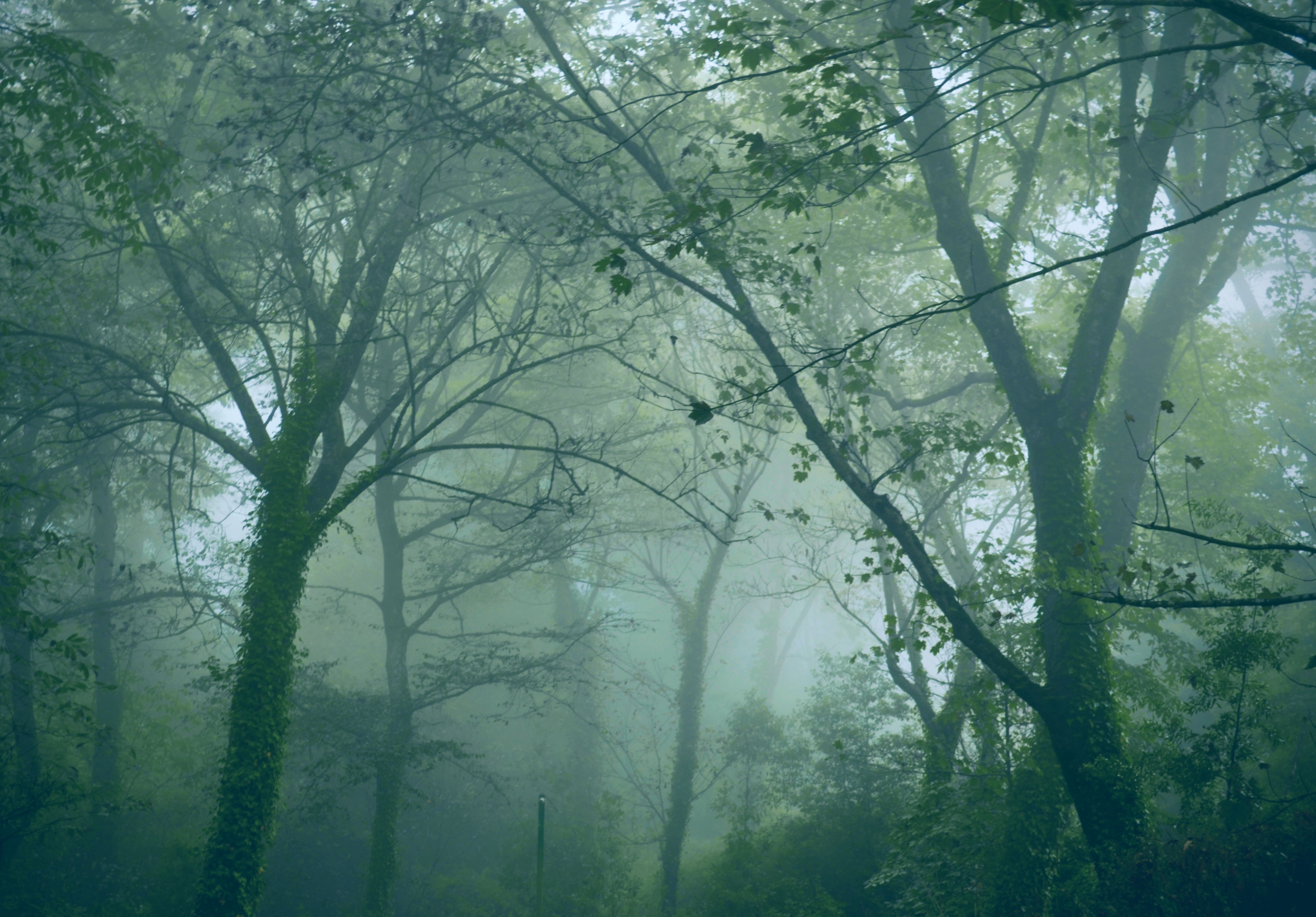
About Sintra
Whatever the future holds, the moonlit nights on the Sintra hills will continue.
José Hermano Saraiva
Sintra is an enchanted village just outside Lisbon. Its palaces and historical buildings, along with its location right in the middle of the forest make of Sintra a magical place. This fairy-tale-like town is only a 40-minute train ride away from Lisbon from the Rossio station.
Another distinguishing feature of Sintra is its microclimate. Because it rests so immersed in the forest, the weather in Sintra tends to be rather peculiar. It is very common to find Sintra and the sorrounding hills covered in thick fog, giving it a remarkable mysticality. This might have been one of the reasons that led many noble families, including the Portuguese Royal family to build their palaces in the region. Such an exquisite landscape deserved an equally impressive architecture. Sintra palaces are dazzling and dreamy, often built in the romanticism period. During this period, in which musing romantics dreamt about melancholic walks in the forests, Sintra seemed the only suitable place where these troubled souls could find rest.
UNESCO has deemed it Cultural Landscape because of such monuments as Palácio Nacional da Pena, Palácio de Monserrate, Palácio da Vila, Quinta da Regaleira, and many more that you will surely want to visit. As many portuguese cities, Sintra has its very own pastry delicacy - queijadas de Sintra - a very special milk tart.
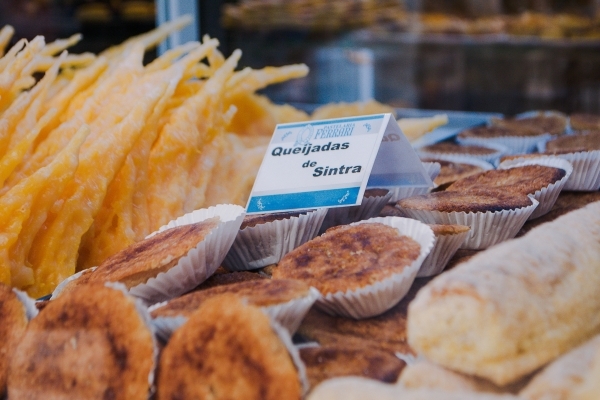
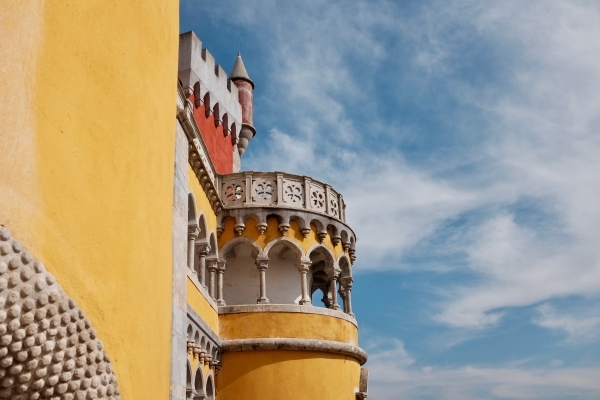
Pena National Palace is one of the greatest expressions of architectural Romanticism in the world, rising over a craggy rock, it is the second highest point of the Sintra hills. The palace consists of two wings, the old manufactory convent of the Order St. Jerome and the wing built by King Ferdinand II in the nineteenth century. These two wings are surrounded by construction, which has watchtowers, an access tunnel and a drawbridge.
This palace is one of the most eclectic works of Europe, because it mixes neo-Gothic elements, neo-Manueline, neo-Moorish and Renaissance. This monument has a strong influence of German romanticism, being inspired by the castles on the verge of Reno Stolzenfels and Rheinstein. The idea was to emphasize the mythological figure that adorns the entrance and the interior, decorated with oriental porcelains and European furniture.
You should also visit the Park of Pena in the surrounding areas of the palace, with its romantic gardens and more than five hundred tree species. The most interesting construction of this park is the Chalet of the Countess, built by D. Fernando II and his future second wife, Elise Hensler (or Countess d'Edla) as a holiday home. It is a wooden building with two floors, inspired by alpine architecture.
The Pena Palace was listed as a National Monument in 1910 and a UNESCO World Heritage site in 1995. In 2007 it was chosen to become one of the Seven Wonders of Portugal. It is open for tourist visits every day. The Pena Palace was the most visited monument in the country in 2015, reaching one million visitors for the first time.
Address: Estrada da Pena, 2710-609 Sintra
Phone: +351 21 923 73 00
Schedule:
Park: 9:30 am - 8 pm, 7 pm last entrance;
Palace: 9:45 am - 7 pm, 6:15 pm last entrance;
Terrace: 9:45 am - 7:30 pm, 6:45 last entrance.
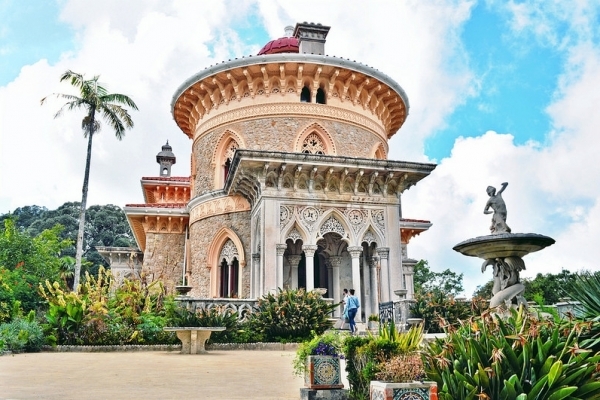
Monserrate Palace is one of the most eclectic 19th-century monuments in Sintra, with medieval and oriental influences. The exotic and vegetabel motifs extend to the outside, making Monserrate Park one of the richest Portuguese botanical gardens and the most beautiful romantic garden in Europe.
This monument was built by Sir Francis Cook, Viscount Monserrate, in 1858. The writer William Beckford, the richest young Englishman of his time, rented the property in 1793, performing few construction works in the palace and began to create the landscaped garden you know today. These gardens were designed to take advantage of the microclimate characteristics of the Sintra hills, containing thus more than 3000 exotic species, currently spread over the various landscapes, including a rose garden, Mexican and Japanese gardens.
The entrance to the palace is through an octagonal hall of pointed arches and marble columns. From there, visitors can tour the rooms, including the library, the chapel, the music room and the billiard room, decorated with beautiful details, both on the walls and ceilings.
The Park and the Monserrate Palace were classified as Public Interest Property in 1975 and in 1995, and were integrated into the Cultural Landscape of Sintra, classified as World Heritage by UNESCO. In 2013, Monserrate Park was awarded a European Garden Award for "Best Development of Historic Parks or Gardens".
Address: Rua Visconde de Monserrate, 2710-405 Sintra
Phone: +351 21 923 7300
Schedule:
Park: 9:30 am - 8 pm, 7 pm last entrance
Palace: 9:30 - 7 pm, 6:15 pm last entrance
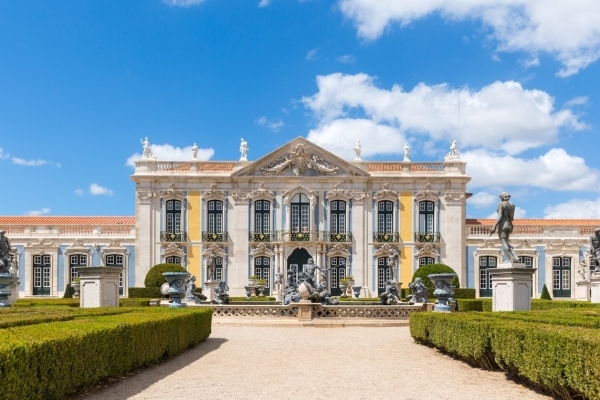
Queluz National Palace is located halfway between Sintra and Lisbon. Its gardens are one of the best examples of the harmonious connection between palatial architecture and landscaping in Portugal. The Queluz Palace was built in 1747 and it is a large rococo building colored in pink, inspired by Versailles.
Initially designed as a holiday home, it was the official residence of the royal family in the 18th century. The family left Queluz during the French invasions, taking much of the palace's content. However, its interior has been preserved and renovated over the years and it gives visitors a clear idea of how royalty lived.
The garden is also beautiful - its baroque fountains and stone sculptures will make you travel back in time. Today, the palace is used for visiting heads of state and also to host galas and concerts, due to the acoustics of the music room. It was classified as a National Monument in 1910.
Address: Largo Palácio de Queluz 2745-191 Queluz
Phone: +351 21 923 7300
Schedule: 9:00 am - 7:00 pm (open every day)
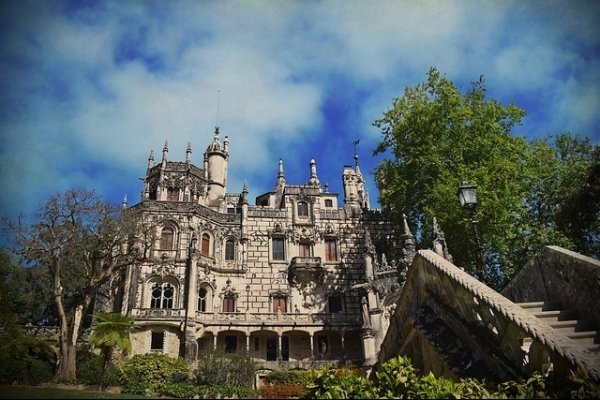
Quinta da Regaleira is one of the most amazing monuments in Sintra, classified as World Heritage by UNESCO. It is located near the historic center of Sintra, halfway between National Palace and the Palace of Seteais.
Between 1898 and 1913, along with the architect Luigi Manini, philanthropist António Carvalho Monteiro transformed the Quinta da Regaleira in an ambitious Total Art project, materializing the concept of an imaginary garden - the trend since the end of the 18th century. Quinta da Regaleira is now considered a masterpiece of neo-Manueline style of the last period of Romanticism in Sintra.
Such an enigmatic monument is one of the most striking examples of revivalist architecture in the country. It is famous due to its gardens and architectural elements that show signs of masonic rites and conceptions. Visit this space and see for yourself the Chapel of the Holy Trinity, the famous initiatory well, the palace, the caves, lakes and gardens that make the Quinta da Regaleira a magical place.
Address: Rua Barbosa do Bocage 5, 2710-567 Sintra
Phone: +351 21 910 66 50
Schedule:
April to September 9:30 am to 8 pm, 7 pm last entrance;
October to March 9:30 am to 6 pm, 5 pm last entrance.



